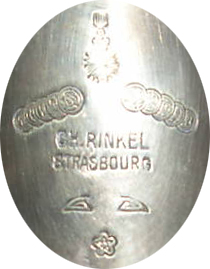I just uploaded an album of the C=pitched tenor that my tech just finished restoring. The work was a labour of love.
I was the only 2nd person (my tech was the 1st) and first sax player to play this baby in well over 1/2 a century. It had been salvaged from a box. It was in pieces and was missing bits and parts (like the octave lever and entire mechanism), tone hole chimneys, and had a bent body tube. Fortunately its neck was still there, though slightly kinked. The kink was removed, but the neck was not sent out for re-plating.
I will be writing a full review of the horn for my website, and linking to it here when done in the next day or two. In the meantime, I thought I would share the pics of this odd duckling.
I can tell you all, this is NOT a C mel. I brought my Conn straight neck C mel along to compare/contrast. There was no comparison. The Sax horn sounded somewhere in between a tenor and an alto. It did not have the overtones that the Conn has (when using the same Runyon MP). It is its own thing. A unique, quirkie horn.
I was the only 2nd person (my tech was the 1st) and first sax player to play this baby in well over 1/2 a century. It had been salvaged from a box. It was in pieces and was missing bits and parts (like the octave lever and entire mechanism), tone hole chimneys, and had a bent body tube. Fortunately its neck was still there, though slightly kinked. The kink was removed, but the neck was not sent out for re-plating.
I will be writing a full review of the horn for my website, and linking to it here when done in the next day or two. In the meantime, I thought I would share the pics of this odd duckling.
I can tell you all, this is NOT a C mel. I brought my Conn straight neck C mel along to compare/contrast. There was no comparison. The Sax horn sounded somewhere in between a tenor and an alto. It did not have the overtones that the Conn has (when using the same Runyon MP). It is its own thing. A unique, quirkie horn.



